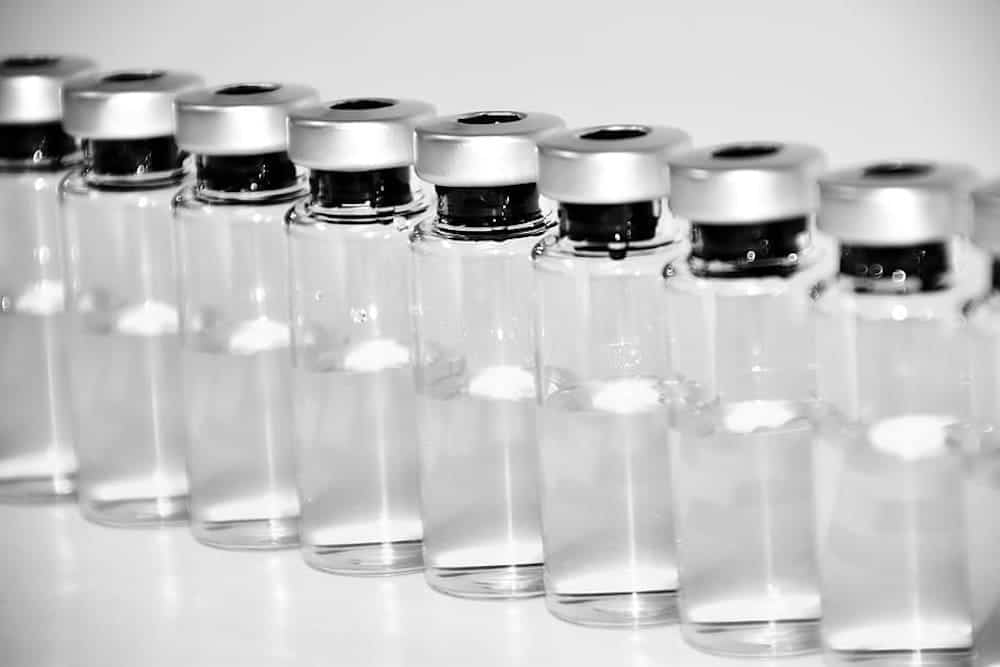
[Image above] Glass vials generally are a good way to store volatile chemicals—but new research shows that may not be the case for certain biomolecules. Credit: Pxfuel
When conducting experiments, scientists try to minimize the number of variables that could affect the outcome so it is possible to draw definite conclusions about the results. However, controlling for every variable is impossible, and some assumptions must be made about any given experiment to allow testing to proceed.
Researchers justify assumptions based on past tests performed by other scientists and/or by performing additional tests in parallel with the experimental ones. Yet even well-vetted assumptions can be upended at times and lead to experiments requiring closer analysis.
For example, it is typically taken for granted that the apparatuses used for storing and stirring solutions are chemically durable, and thus will not affect the mixture. One study in 2019, however, pointed out that while stir bars may be inert, stir bar contamination may inadvertently catalyze reactions.
Glass vials are another piece of equipment known for their chemical durability. They are used frequently for storing volatile or sensitive materials such as pharmaceutical drug products, including the vaccines for fighting COVID-19.
While generally the chemical durability of glass vials can be assumed, scattered throughout literature are some reports of chemical reactions being affected by glass containers, such as here, here, and here. To understand why, “Systematic study on glass catalyzed chemical reactions is needed to provide experimental evidence to support any proposed mechanism,” researchers write in a recent open-access paper.
The researchers come from Purdue University and are led by Robert Graham Cooks, the Henry Bohn Hass Distinguished Professor of Chemistry. They aimed to gain a deeper understanding of how glass surfaces can affect chemical reactions by testing how various base-catalyzed chemical reactions—including elimination, solvolysis, imine formation, Katritzky reaction, and Knoevenagel condensation—are affected by the addition of glass microspheres.
The researchers screened a large set of glass-catalyzed reactions using a high-throughput system they developed in a previous study. The system is based on desorption electrospray ionization mass spectrometry (DESI-MS), a mass spectrometry technique developed by Cooks’ group in the early 2000s that minimizes requirements for sample preparation.
The DESI-MS screening revealed significant differences in chemical kinetics between reactions with glass microspheres and those without. However, because “the acceleration factor seen in the DESI-MS data will include contributions from droplet acceleration as well as glass catalysis,” the researchers write, they used nanoelectrospray ionization mass spectrometry (nESI-MS) in subsequent detailed analyses for its “superb” sensitivity and use as a reliable nonaccelerating analytical method.
The nESI-MS analysis supported the finding that reactions progressed much faster with glass microspheres than those without. The researchers suggest this acceleration occurs because glass surfaces can act as strong bases and convert protic solvents into their conjugate bases, which then act as bases/nucleophiles when participating in chemical reactions.
These findings “greatly broadened the scope of substrates affected by glass reactions,” the researchers write, from positively charged molecules to neutral molecules, zwitterionic molecules, and negatively charged molecules as well.
In particular, they emphasize that the finding that certain biomolecules such as glutathione and acetylcholine can undergo significant amounts of chemical degradation when in contact with glass surfaces “raises awareness of the possible significance of the phenomenon considering that many important biomolecules are stored in solution in glass containers.”
To further this point, they followed up on the mechanistic analyses by using nESI-MS to investigate degradation of phospholipids induced by glass. (Phospholipids are important biomolecules in many practical aspects of chemistry, including the mRNA-based COVID-19 vaccines.)
They found that all three phospholipids studied degraded when in contact with glass surfaces; lower concentrations of phospholipids gave higher percentages of degradation.
“These results should draw attention to possible deficiencies in current protocols involving storage of phospholipids in organic solvents in glass containers,” they write. In general, “storage of base/nucleophile-labile biomolecules in glass containers should therefore be avoided.”
The open-access paper, published in Chemical Science, is “Glass surface as strong base, ‘green’ heterogeneous catalyst and degradation reagent” (DOI: 10.1039/D1SC02708E).
